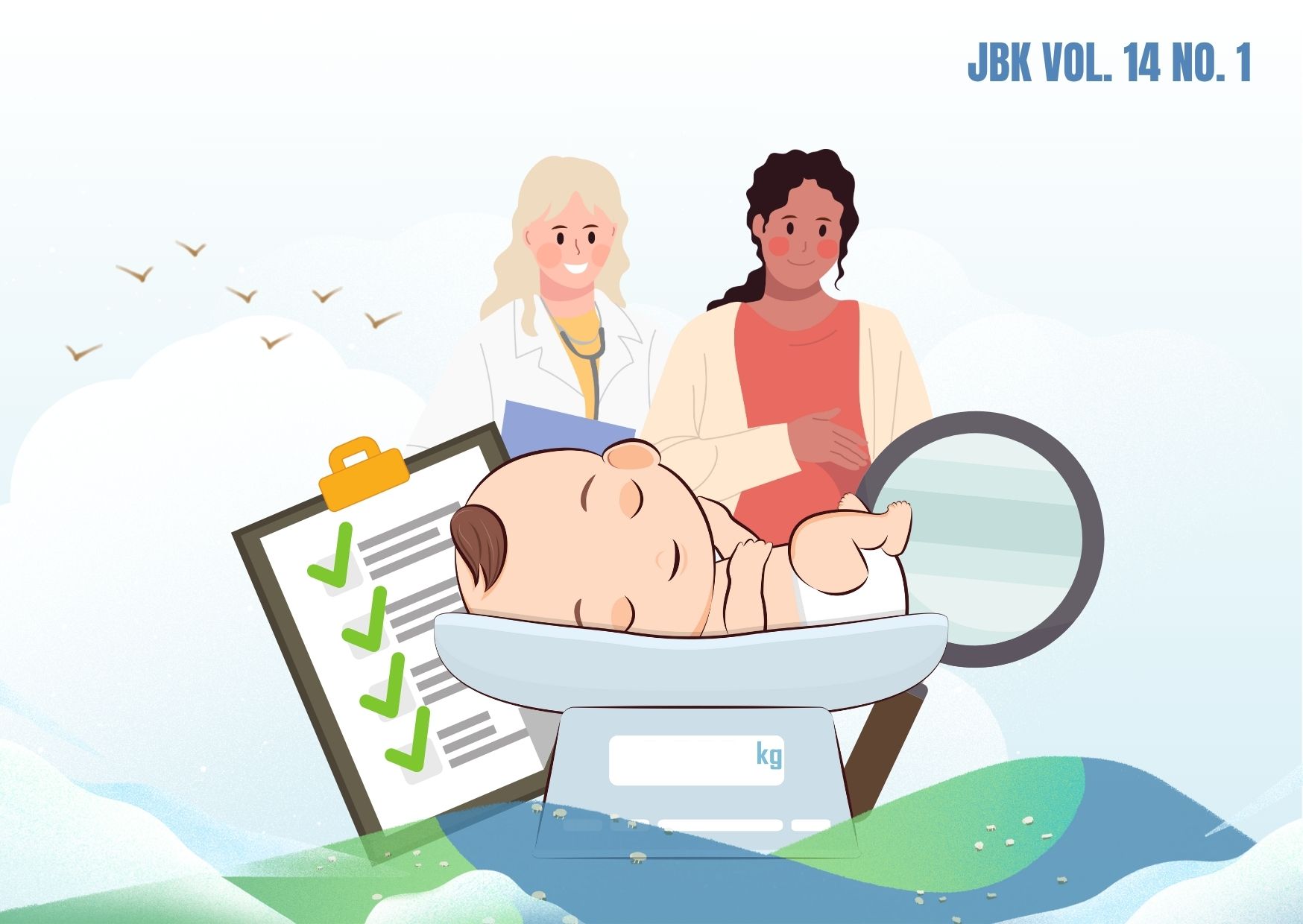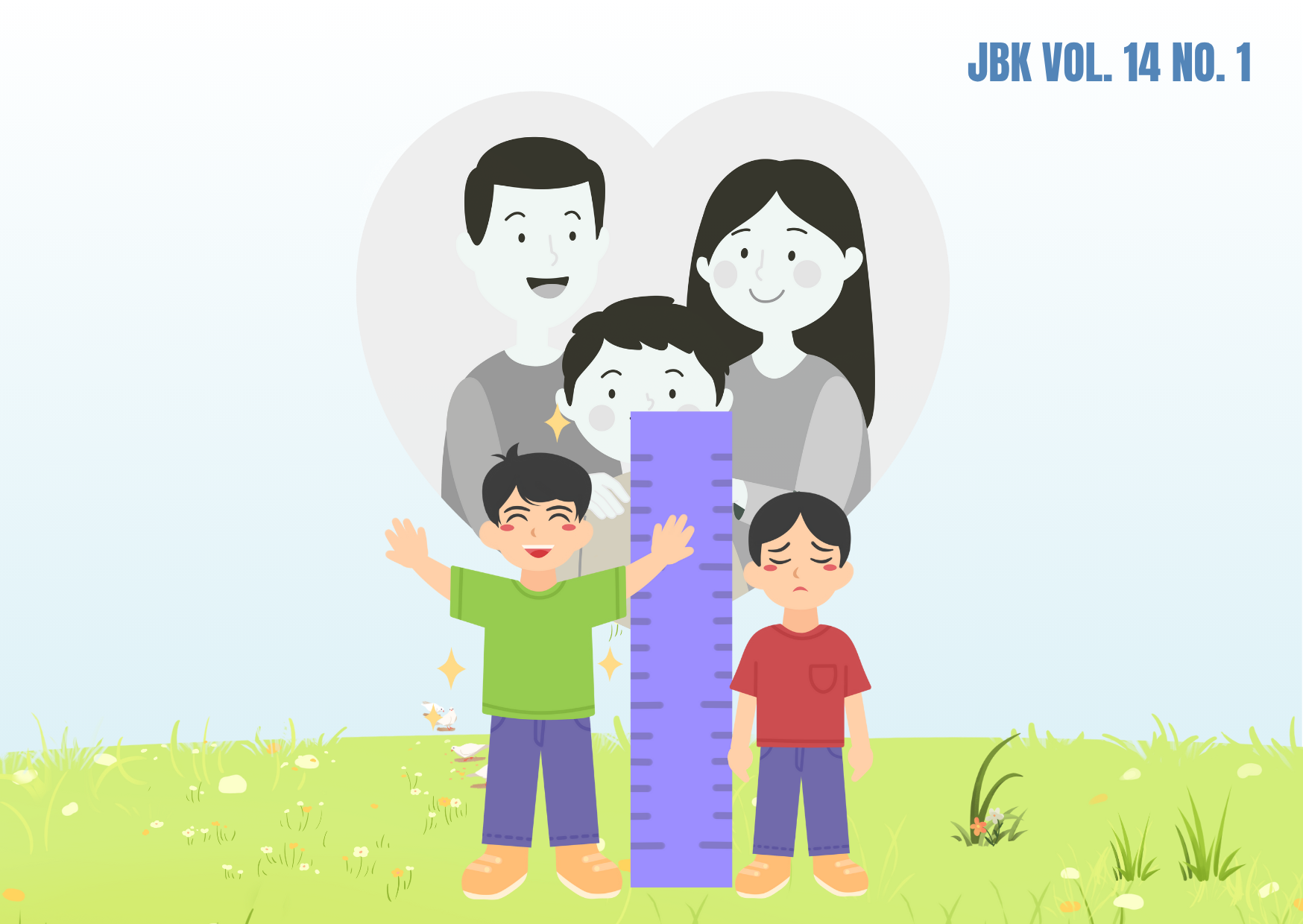FORECASTING OF UNMET NEEDS PERCENTAGE IN EAST JAVA PROVINCE USING AUTOREGRESSIVE INTEGRATED MOVING AVERAGE (ARIMA) METHOD
Downloads
ARIMA uses present and past values as the dependent variable. The accuracy of the ARIMA forecasting method results is good to be used to obtain short-term forecasts. Compared to other time series methods, the advantage of ARIMA method is that it can be used in the percentage of unmet needs data in East Java Province since ARIMA method does not require any specific data motives.Unmet need is a group of women who do not want to have any more children or want to minimize their pregnancy but refuse to use contraception to prevent pregnancy. This study aims to determine the percentage of unmet needs in East Java Province in the future. This study will analyze the value of forecasting and determine the best model for ARIMA. The data used is the monthly data of unmet needs percentage of East Java Province starting from January 2014 to April 2019 (64 data plots). The results showed that the percentage of the number of unmet needs in East Java Province can be predicted using ARIMA model (12,1,0) without constant. The model is based on ARIMA (12,1,0) diagnostic test without constant meeting all the test requirements. The results of forecasting held a MAPE value of 2.369% and MAE of 0.26%. Based on MAPE and MAE, the model has a very good forecasting ability with a fairly small error value. Forecasting results indicated fluctuations in unmet needs data, where from December 2019 to February 2020 there was an increase in number of unmet needs in East Java Province. In the interim, starting in March 2020, the data needs in East Java Province tend to be constant at a higher position than the previous increase.
Arianti, C., 2015. Prediksi Jumlah Pencapaian KB Baru IUD di Kabupaten Jombang dengan Metode Autoregressive Integrated Moving Average (ARIMA). Thesis. Universitas Airlangga.
As'ad, M., Wibowo, S.S., and Sophia, E., 2017. Peramalan Jumlah Mahasiswa Baru dengan Model Autoregressive Integrated Moving Average (ARIMA). JIMP - Jurnal Informatika Merdeka Pasuruan, 2 (3), pp.20–33.
Astutik, S.R., Sukestiyarno, and Hendikawati, P., 2018. Peramalan Inflasi di Demak Menggunakan Metode ARIMA Berbantuan Software R dan Minitab. Jurnal Universitas Negeri Semarang. Prisma I: pp.745–754.
Aziz, S., Sayuti, A., and Mustakim, 2017. Penerapan Metode ARIMA untuk Peramalan Pengunjung Perpustakaan UIN Suska Riau. Seminar Nasional Teknologi Informasi Komunikasi dan Industri, 2018 (SNTIKI 9), pp.186–193.
East Java Province National Board of Population and Family Planning, 2019. Hasil Evaluasi dan Analisis Program KKBPK. Surabaya.
Ekoriano, M., and Novita, F., 2018. Dinamika Pemakaian Kontrasepsi Modern di Indonesia (Analisis Data Susenas 2015). Jurnal Kependudukan Indonesia, 13 (1), pp. 27–38.
Fadhila, N.H, Widoyo, R., and Elytha, F., 2016. Unmed Need Keluarga Berencana pada Pasangan Usia Subur di Kecamatan Padang Barat Tahun 2015. Jurnal Kesehatan Masyarakat Andalas, 10 (2), pp.151–156.
Kartika, W.D.D., 2014. Pengaruh Faktor Unmet Need Keluarga Berencana. Jurnal Biometrika dan Kependudukan, 4 (1), pp. 70–75.
Kasanah, L.N., 2016. Pengaplikasian Autoregressive Integrated Moving Average (ARIMA) Guna Memprediksi DBD (Demam Berdarah Dengue) pada Puskesmas Mulyorejo. Jurnal Biometrika dan Kependudukan, 5 (2), pp.177–186.
Margi, K., and Pendawa, S., 2015. Analisa dan Penerapan Metode Single Exponential Smoothing untuk Prediksi Penjualan pada Periode Tertentu (Studi Kasus: PT. Media Cemara Kreasi). In: Prosiding SNATIF Ke-2. Kudus: Fakultas Teknik-Universitas Muara Kudus, pp.259–266.
National Board of Population and Family Planning, 2018. Survei Demografi dan Kesehatan Indonesia 2017. Jakarta.
Pakaja, F., Naba, A., and Purwanto, 2012. Peramalan Penjualan Mobil Menggunakan Jaringan Syaraf Tiruan dan Certainty Factor. Jurnal EECCIS, 6 (1), pp. 23–28.
Resti, S. N., Barus, E., and Anita, S., 2019. Analisis Unmet Need KB pada Wanita Pasangan Usia Subur (PUS) di Wilayah Pesisir Pantai Desa Bagan Kecamatan Percut Sei Tuan Kabupaten Deli Serdang Tahun 2019. Midwifery Journal, 4 (2), pp. 71–73.
Rismawati, S., 2012. Unmet Need: Tantangan Program Keluarga Berencana dalam Menghadapi Ledakan Penduduk Tahun 2030. Thesis. Universitas Padjadjaran.
Sarlis, N., 2019. Faktor yang Berhubungan dengan Unmet Need pada Ibu Non Akseptor Tahun 2018. Jurnal Endurance: Kajian Ilmiah Problema Kesehatan, 4 (1), pp.184–193.
UNFPA, 2018. New Year, New Beginnings. [online] United Nations Population Fund. Available at: <https://www.unfpa.org/press/new-year-new-beginnings> [Accessed 3 Dec. 2019].
Copyright©2022 Jurnal Biometrika dan Kependudukan (Journal of Biometrics and Population)
This work is licensed under a Creative Commons Attribution-NonCommercial-ShareAlike 4.0 International License.
1. Copyright of all journal manuscripts is held by the Jurnal Biometrika dan Kependudukan.
2. Formal legal provisions to access digital articles of the electronic journals are subject to the provision of the Creative Commons Attribution-ShareAlike license (CC BY-NC-SA), which means that Jurnal Kesehatan Biometrika dan Kependudukan to keep, transfer media/format, manage in the form of databases, maintain, and publish articles.
3. Published manuscripts both printed and electronic are open access for educational, research, and library purposes. Additionally, the editorial board is not responsible for any violations of copyright law.



































